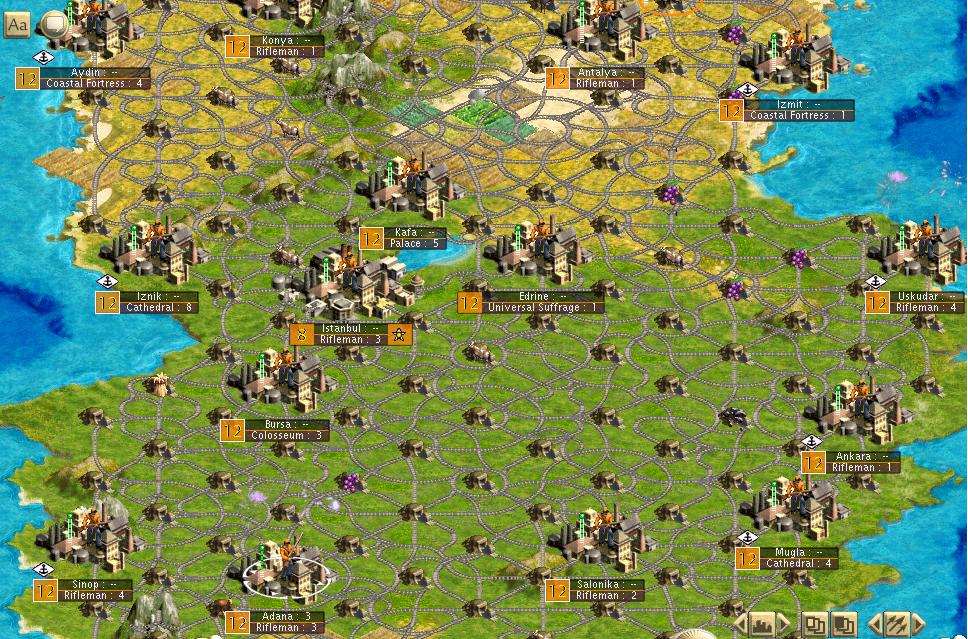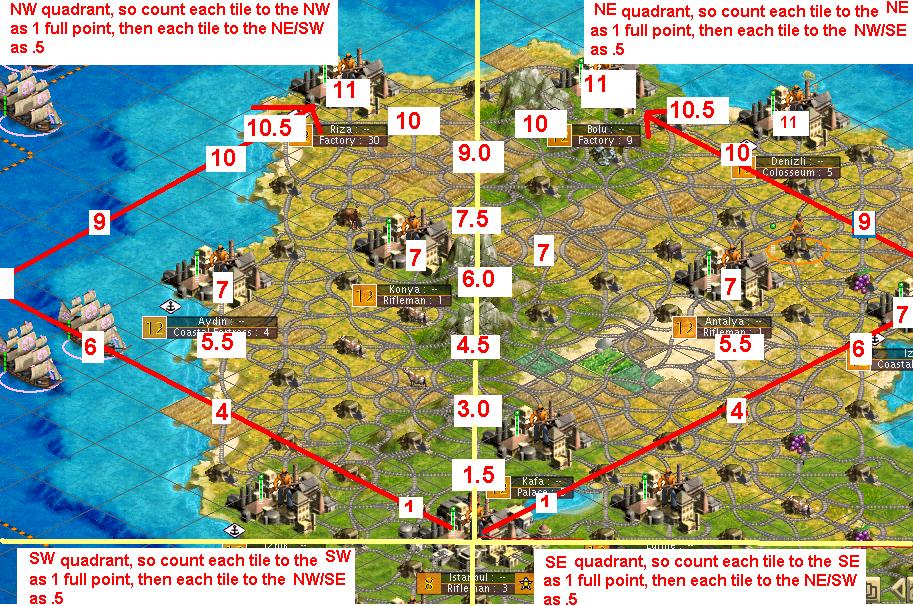Ok, here was my attempt at using this new RCP style:
I hope I calculated the distances right. I found my own easy way of figuring the distance, but I was pulling my hair out at first trying to figure it out.

As you can see, the first ring is pretty dense, but I needed to utilize the lake as best I could (only fresh water source on the whole island). This might be a good model for those that like to do an ICS kind of start. The capital itself, is a little squished, but every other city is utilizing a full 12 tiles (I missed 1 grassland square-but the wheat was more important, and a few odd water tiles are unused).
Standard map:
Four cities at 2.5 distance.
Ten cities at 7.0 distance.
Five cities at 11.0 distance.
There normally would be more chances for sites, but of course the shape of the island dictated the number of sites.
Here is some figures for later on in the game.
In democracy:
First ring: ~2% waste with factory, courthouse, WLTK day (just 1 shield)
~6% waste without courthouse, factory, or WLTKD (~2 shields out of 30+).
The first ring built the pyramids, Hanging Gardens, and all the wonders after the ancient era (monarch level)
Second ring: 10% waste if you have factory, courthouse, WLTKD 20% without any of these.
If you include the capital, that is 15 cities with 10% or less waste for a map where 16 cities is the 'optimal' number.
Third ring: 30% waste with factory, courthouse, WLKD, 63% waste without any of those.
Note, these % would get better when you get Hoover's (I had no rivers on my island

) or other factory enchancements, and when you get police stations built.
If this was a pangea map, where I wouldn't be so restricted in how many cities to put in that 3rd ring, I can imagine you could have double the optimal number of cities and the worst city would have less than 50% corruption, without a forbidden palace needed.







